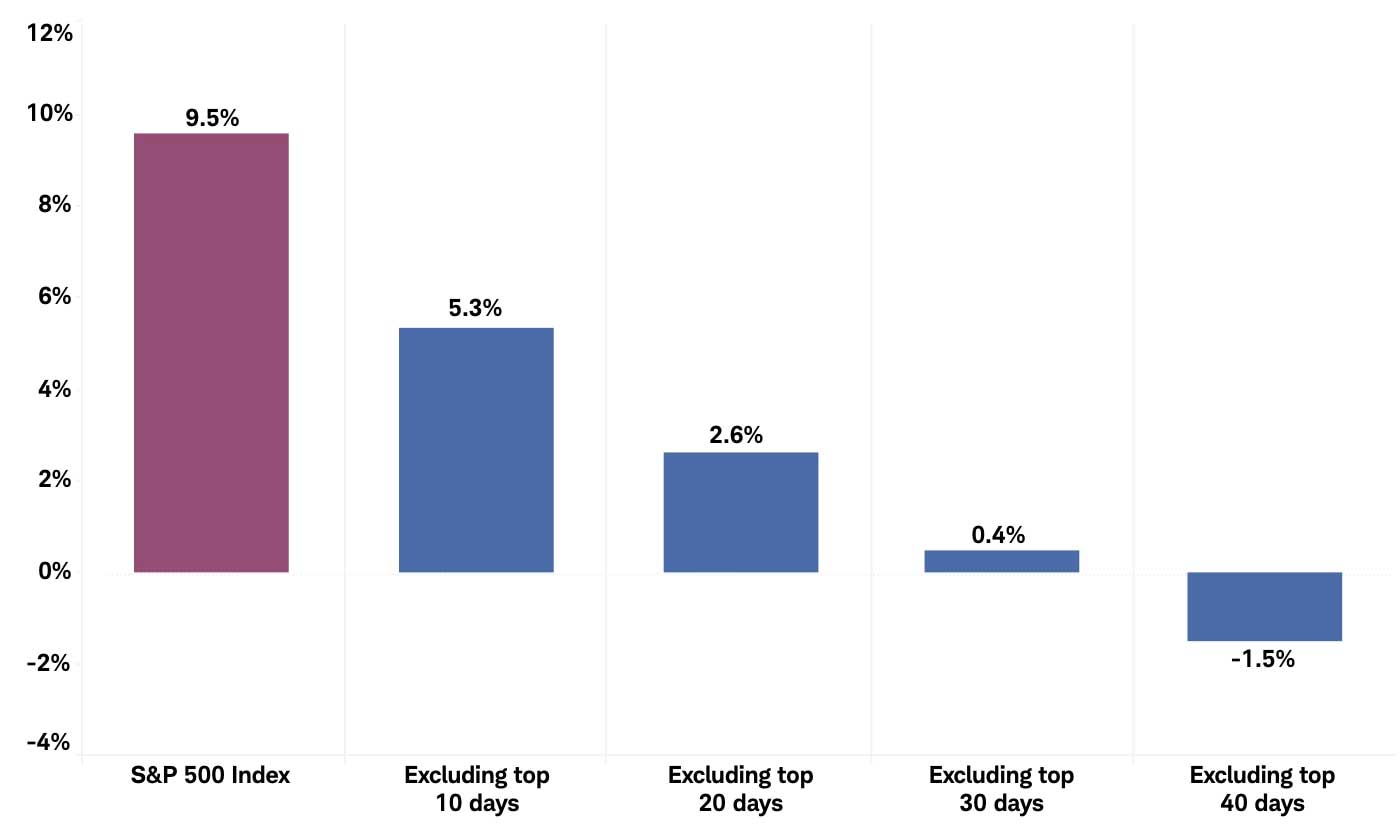
Financial markets have recently experienced a decline, with the S&P 500 pulling back nearly 7% since February 19th. As mentioned in our annual letter, increased volatility was expected this year. Over the past few weeks, uncertainty surrounding trade policy, labor markets, government spending, and liquidity has intensified. Given these conditions, a negative GDP for this quarter appears likely, along with a potential uptick in unemployment. As economic growth slows, it is natural to have concerns about your investments and the broader market.
Navigating Market Corrections
Market corrections can be unsettling. As part of our planning process, we work to determine the appropriate level of risk you are comfortable with before a correction occurs and structure investments accordingly. Your individual investment plan is designed to be diversified in alignment with your risk tolerance. If your risk profile is conservative, we have already positioned your portfolio beyond traditional equity markets. Our lower-risk strategies incorporate diversification across stocks, bonds, money markets, and cash to help mitigate volatility and drawdowns during turbulent times.
Historically, financial markets experience a 10% or greater pullback approximately every 1.2 years, yet many of those years still deliver positive returns. For instance, in 2018, the S&P 500 faced corrections exceeding 10% in both the first and fourth quarters, yet rebounded with a 13% gain in Q1 2019. Similarly, after the sharp decline in Q1 2020, the market surged more than 100% over the next two years. While the timing of recoveries is uncertain, we remain steadfastly focused on your long-term investment strategy.
Historical Perspective on Market Rebounds
Market declines have historically been followed by recoveries. According to the Schwab Center for Financial Research, since 1974, the S&P 500 has risen an average of more than 8% one month after reaching a correction bottom and over 24% one year later. A disciplined approach, combined with a diversified portfolio and adherence to a long-term strategy, remains essential for investment success.
As Mike Tyson famously said, “Everyone has a plan until they get punched in the mouth.” This sentiment underscores the importance of resilience and strategic discipline during volatile periods.
Key Market Insights
Several data points reinforce the rationale behind our long-term investment approach:
- Market declines are common: Since the early 1980s, the S&P 500 has experienced a drawdown of more than 5% in every year except two (1995 and 2017).
- Recovery times are typically short: The average time to recover from a 5%-10% downturn is three months, while a 10%-20% correction averages an eight-month recovery period.
- Recession-related declines take longer to recover: During the mild recessions of 1957, 1960, 1980, 1981, and 1991, the average market decline was nearly 20%, with recoveries occurring within one to two years.
- The best market days often follow the worst: Of the 30 best days in the stock market over the past 30 years, 24 occurred during major downturns, such as the Tech Bubble, the Global Financial Crisis, and the COVID-19 pandemic. This highlights the difficulty of market timing and reinforces the importance of staying invested.
- Adding to portfolios during downturns can be beneficial: Historically, long-term investors who added to their portfolios during corrections have fared better than those who withdrew funds. At Evergreen, we actively seek opportunities to optimize portfolios during market declines.
- Time in the market beats timing the market: Studies, including those from Dalbar, have shown that investors who remain committed to their investment plans tend to achieve better outcomes than those who attempt to time market fluctuations.
Stay Focused on the Long Term
Panic-driven decisions can be costly. The chart below illustrates the impact of missing the best-performing days in the market—many of which occur during volatile periods. Maintaining your investment plan through market fluctuations is crucial to long-term success.
As Warren Buffett wisely stated, “Only buy something that you’d be perfectly happy to hold if the market shut down for ten years.”
Long-Term Rewards
The S&P 500 Total Return Index has demonstrated strong long-term growth. Below shows the historical returns since 1989. While short-term fluctuations are inevitable, historical data supports the value of long-term investing.
Ben Graham summarized this well: “In the short run, the stock market is a voting machine. But in the long run, it is a weighing machine.”
Conclusion
The market has delivered above-average returns in recent years, and periodic slowdowns and corrections are both normal and healthy. These periods help bring returns in line with long-term expectations. While short-term declines may be unsettling, markets ultimately weigh long-term cash flows and earnings growth appropriately.
At Evergreen Wealth, every client has an individualized plan designed to align with their risk tolerance and long-term objectives. We anticipate and prepare for market declines, managing risk while seeking opportunities in turbulent times. The past two years have brought exceptional returns, and some of those gains may be given back in the short term. However, we remain steadfast in our disciplined approach, staying laser-focused on your long-term goals.
If you have any questions or concerns, please feel free to reach out. We are here to support you.


